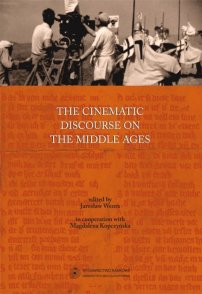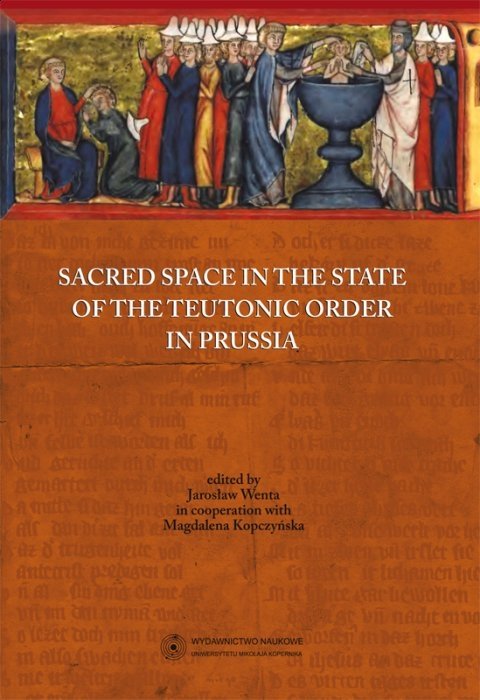Sacred space in the state of the Teotonic Order in Prussia
The sacred aspect of the social organization of the Balts provokes us to think about the early Middle Ages, the Ravenna of Theodoric the Great and his letter to the Aesti king. Thus, should this imply that the organization of the sacred sphere in the social life of the Balts was a result of some unknown historical problems?
In order to understand the course and organization of the Northern Crusades, we must comprehend the principles of the structure of the sacral, social, and geographical realms in Prussia.
Published by the Centre for Medieval Studies at Nicolas Copernicus University inToruń, the second volume of the Sacra Bella Septentrionalia series is meant to realize the goals set in the Foreword to the first volume. Our aim was to arouse a discussion of the crusades in the Baltic Sea Region.
Foreword, Jarosław Wenta
List of abbreviations / 5
Jarosław Wenta, Foreword / 9
I.
Alan V. Murray, Sacred space and strategic geography in twelfth-century Palestine / 13
Sławomir Wadyl, The sacred sphere of Prussian life in the early Middle Ages / 39
Ewelina Siemianowska, Sacred places in the research on early medieval roads and routes. The Prussian case / 59
Kurt Villads Jensen, Physical extermination of physical sin – remarks on theology and mission in the Baltic region around 1200 / 87
Krzysztof Kwiatkowski, Christ ist erstanden… and Christians win! Liturgy and the sacralization of armed fight against pagans as determinants of the identity of the members of the Teutonic Order in Prussia / 101
II.
Sławomir Jóźwiak, The living and utilitarian space of the Teutonic castle in Marienburg, Prussia, in the time of Grand Masters (1309–1457) / 131
Waldemar Rozynkowski, The liturgical space in the chapels of Teutonic monasteries in Prussia – selected issues / 143
Michał E. Woźniak, Art and liturgy in Teutonic castle churches / 153
Monika Jakubek-Raczkowska, Between the ideology of power and lay piety. Visual arts in the State of the Teutonic Order in Prussia (from the late thirteenth to the middle fifteenth century) / 181
III.
Zdzisław Kliś, The city as hell and its structure in medieval wall painting / 225
Dariusz Tabor, The Holy City: idea and representation in the medieval art of Central Europe / 243
Paweł A. Jeziorski, Places of executions as an element of sacred space in Prussian and Livonian cities in the late Middle Ages and the Early Modern Period / 265
Wiesław Sieradzan, The sacral space in Mazovian cities as an example of late reception of European models / 277
Rafał Simiński, Church as sacred space in the light of thirteenth and fifteenth-century Livonian and Prussian sources / 291
Jarosław Wenta
- Studien über die Ordensgeschichtsschreibung am Beispiel Preußens
- Corpus inscriptionum Poloniae, t. 9, Województwo olsztyńskie, z. 1, Lubawa i okolice
- Die Geschichtsschreibung in Mitteleuropa. Projekte und Forschungsprobleme
- Die Hofgeschichtsschreibung im mittelalterlichen Europa
- Mittelalterliche Kultur und Literatur im Deutschordensstaat in Preussen: Leben un Nachleben
- In memoriam honoremque Casimiri Jasiński
- Recepcja kultury średniowiecznej w humanistyce
- Kronika tzw. Galla Anonima. Historyczne (monastyczne i genealogiczne) oraz geograficzne konteksty powstania
- Sacred space in the state of the Teotonic Order in Prussia
- The cinematic discourse on the Middle Ages (in central Europe and beyond)
- The Middle Ages: Narratives of Art
- Rękopis z Eichstätt: Cod. st 697. Konteksty powstania ekscerptów z Kroniki Anonima, tzw. Galla
Powiązane

In memoriam honoremque Casimiri Jasiński
Piotr Oliński, Jarosław Wenta
Kronika tzw. Galla Anonima. Historyczne (monastyczne i genealogiczne) oraz geograficzne konteksty powstania
Jarosław Wenta
Recepcja kultury średniowiecznej w humanistyce
Krzysztof Obremski, Jarosław Wenta
The cinematic discourse on the Middle Ages (in central Europe and beyond)
Jarosław WentaInne z tej kategorii

(Nie)oczywiste „Ziemie Odzyskane”

Pan Samochodzik i…

Narratio sine fine. Studia historica memoriae dedicata







